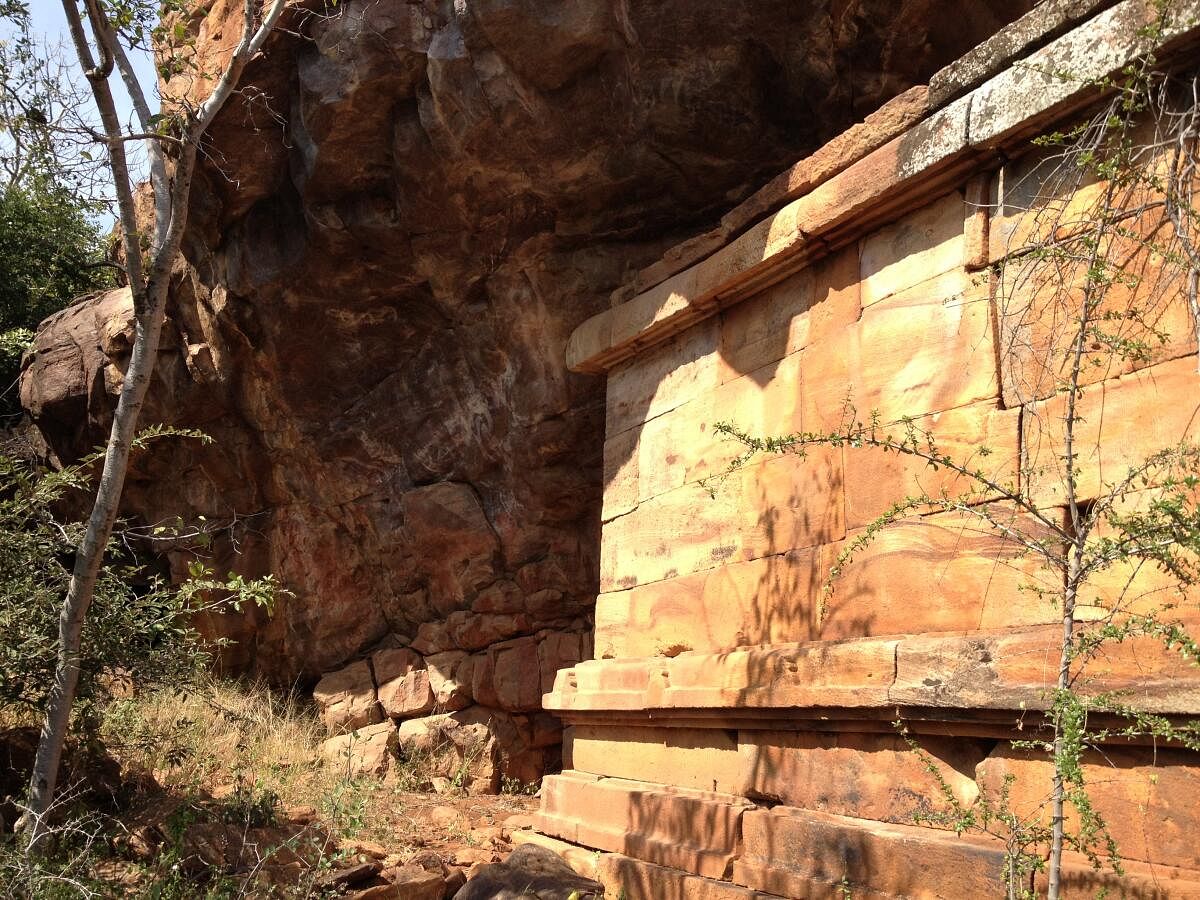

One of the most magical experiences a visitor to Badami can have is the walk over the sandstone plateau towards the northeast, to the temple complex at Mahakuta. A bit over 4 km away, as the crow flies, the trail climbs the cliffs to the east of Badami, and dips into an intermediate valley before cresting a small rise to reach the Mahakuta temples. Most of these are situated in a small cleft in the sandstone ranges, within a walled compound.
The group of ancient temples, mostly dating to the period of early Chalukyan rule, are clustered around a spring-fed tank called the Vishnu Pushkarini. The main temples here are the large Mahakuteshwara and Mallikarjuna temples, built in the southern Dravida style, interspersed with several smaller temples built in the northern Nagara idiom.
Also Read | Transparent home architecture is in
On any given day Mahakuta resounds with the shrieks and shouts of revelers diving and bathing in the Vishnu Pushkarini. But as one exits the compound from its southeastern end, through a gateway guarded by a pair of fierce-looking guardians and onto the trail back to Badami, the sounds of revelry quickly fade away. To the left of this trail, on higher ground, is the small but exquisitely constructed Chalukyan temple known as the Bananti Gudi.
Ahead, a rough track diverges from the main trail, leading to a very curious-looking temple — a small east-facing shrine nestled under a natural outcrop of sandstone. The temple is a small single-celled shrine, built under the overhang of the cliff such that the rock mass above appears to fulfil the role of the temple superstructure. Known as Hire Makuteshwara, the temple consists of a garbha-griha (sanctum) currently housing a linga on a broken pedestal. There is a broken fragment of an idol of Mahishasura Mardini Durga, which some scholars have argued was the main deity installed in the shrine.
Ancient architecture
The temple once had a small pillared porch or a mukhamantapa, which has now collapsed. The central part of the temple roof is flat, with gently sloping slabs on either side. The whole structure is cleverly located beneath the overhanging part of the cliff. The artisans who erected the shrine clearly intended the cliff to act as the spire of the temple. As the art historian Gary Tartakov has stated, “It takes no special leap of the imagination to recognise the rock that climbs above it as its tower.”
Stella Kramrisch, in her landmark book “The Hindu Temple”, proposes that the sanctums of ancient temples were conceived as caverns within mountains. This probably derives from an earlier practice of using natural caves within mountains as sacred spaces.
In fact, the very term for the tower of a temple – ‘shikhara’, signifies a mountain peak. It is interesting to note that certain types of temples mentioned in ancient architectural treatises were named after mountains, like Meru, Kailasa and Mandara.
The earliest temples in stone were “cave temples,” scooped out of living rock. The earliest temples in Badami, too, are the rock-cut temples of the South Fort, which truly live up to the image of the cave within a mountain. The ingenuity of the artisans who erected the temple to Makuteshwaranatha lay in identifying a suitable outcrop of sandstone and skillfully integrating the temple with it such that the rock mass literally became the shikhara of the temple.
Though small and hardly visited by the multitudes which throng the main Mahakuta site, the Hire Makuteshwara temple might be an important part of Chalukyan history. A sizeable fluted pillar had been discovered fallen outside the compound of Mahakuta, and is now displayed in the Gulbarga Museum. It sports an inscription referring to Mangalesa, the third Chalukyan King to rule from Badami.
Dated back to 602 CE, it details an additional donation made to Lord Makuteshwaranatha by Mangalesa, implying that the temple to this god already existed when the gift was made. However, the main temple at Mahakuta – the Mahakuteshwara, which has been assumed to be the temple mentioned in the inscription, cannot be dated earlier than the end of the 7th century, based on architectural features.
Several architectural historians feel that there must have been a temple built of brick at the site of the present Mahakuteshwara temple, which was rebuilt in stone at the same site later, to work around this apparent discrepancy. Tartakov opines that the Bananti Gudi is the temple mentioned in Mangalesa’s inscription.
Original temple
Carol Bolon, an expert on Chalukyan architecture, however, feels that the Hire Makuteshwaranatha temple is the original temple referred to in the inscription. The appearance of the temple with a natural rocky crest as its shikhara does seem appropriate as the abode of Makuteshwaranatha – with Siva being the ‘lord of the mountain crest.’
There are paintings in red ochre and white on the southern face of the cliff. Though at first glance they look like rock art, it has been established that they are inscriptions in the yet undeciphered ‘shankhalipi’, or shell script. During a recent visit to this temple, I noticed a couple of inscriptions in old Kannada script and some faded paintings in a rock shelter to its south. While one of the inscriptions is too weathered to be read, Shrinivas Padigar, a retired Professor of Ancient Indian History and Epigraphy from Karnataka University, Dharwad, has translated the remaining inscription as “Sri Krishna”. From other contexts in Chalukyan architecture nearby, it is known that artisans often inscribed their names in the vicinity of their creations.
Could it be that Krishna was one of those intrepid artisans who created this mountain-temple: A truly ingenious experiment in the annals of temple architecture in this land?